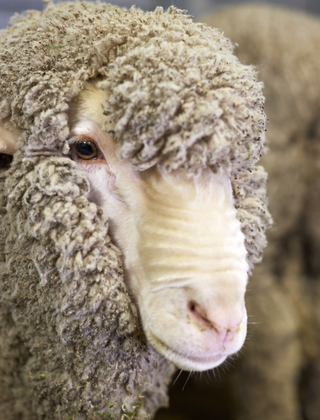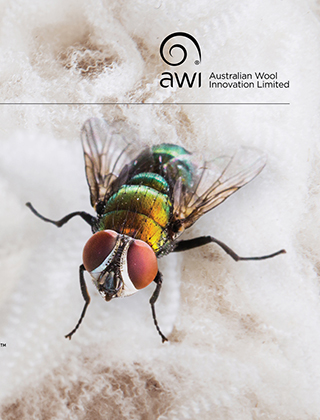Grazing management as a tool for parasite control

Continuous grazing of a paddock increases pasture contamination and subsequent reinfection of sheep by worm larvae. However, grazing management is an effective tool to help reduce the number of eggs being deposited onto pasture and the number of larvae being ingested by sheep. This ultimately can reduce the reliance on chemical drenches and thus slow down the development of anthelmintic resistance.
Larvae on pasture. PHOTO: Techion, NZ
Continuous grazing of a paddock increases pasture contamination and subsequent reinfection of sheep by worm larvae. However, grazing management is an effective tool to help reduce the number of eggs being deposited onto pasture and the number of larvae being ingested by sheep. This ultimately can reduce the reliance on chemical drenches and thus slow down the development of anthelmintic resistance.
When considering changes in grazing management practices there can be two different objectives.
- Prepare low-risk paddocks for vulnerable stock
Prepare low-risk paddocks for vulnerable stock, which will be weaner lambs and pregnant and lactating ewes. It is important to look after these two classes as their ability to mount an effective immune response and defend themselves against worms is compromised. Weaners have yet to fully develop their own immune system. Pregnant and lactating ewes have a compromised immune response due to the metabolic demands of pregnancy and lactation.
Preparing a low-risk lambing/weaner paddock needs to be done in advance as it can take up to six months depending on the environment you live in. You are aiming to spell your paddocks from infected animals to allow existing worm larvae and eggs to die off, while at the same time preventing further contamination. This doesn’t mean these paddocks can't remain productive, you just have to think a little outside the box. For example, you could graze with cattle, or sheep for a short period following an effective drench (wethers are particularly useful here as they are naturally more resistant) or you may like to consider a crop, silage, or hay making.
Other alternative methods of control that lower worm burdens in sheep will help as well, such as a Barbervax program, Bioworma, and selecting resistant rams.
For more information see Preparing low worm-risk paddocks on WormBoss.
- Use rotational grazing as a year-round tool
Use rotational grazing as a year-round tool for all classes of sheep. Regardless of the objective, understanding the graze and rest periods will be fundamental. When considering grazing management strategies, these two critical periods are of equal importance. As with preparing low-risk lambing/weaner paddocks, year-round rotational grazing will require sections of a system to be free of sheep but again this doesn’t mean they have to remain unproductive.
Graze period
The length of time an animal spends grazing a paddock should not only consider the amount of feed available, but the life cycle of the parasite species you are aiming to control (see Paddock contamination with worms on WormBoss). To achieve the latter, one should consider the autoinfection period, the time it takes for eggs (deposited onto pasture in faeces) to hatch into larvae and be ingested by stock. This can take anywhere between 4-10 days dependent on species and environmental conditions.
The aim is to graze stock for a shorter period of time than the autoinfection period. A short graze period will then prevent reinfection and lower parasite exposure, especially important for vulnerable young stock and pregnant and lactating animals.
To choose an ideal graze period, you need to consider the lifecycle of the parasite (see Roundworm life cycle on WormBoss) that you are targeting and the environmental conditions.
Rest period
The rest period is the time a paddock is rested from a single species of grazing livestock. This is because most parasites are host-specific, such that most sheep parasites can only complete their life cycle inside sheep. The rest period also aids in breaking the parasite’s lifecycle by allowing eggs that have been deposited on pasture to hatch and the larvae to then die off without being ingested by livestock (see Rotational grazing on WormBoss).
Choosing the period of grazing and rest is a balance between worm control and pasture utilisation. It is important to consider the species of pasture present and the time of year. Faster growing pasture species and summer conditions will require a shorter rest period between grazing events. This is because pasture recovery is quicker and larval die-off is accelerated in warmer months (see the effect of temperature at Larval survival of barber's pole worm on WormBoss). Slower growing pastures and cooler conditions require a longer rest period (see Scour worm larvae on pasture on WormBoss).
More information: www.wormboss.com.au
This article appeared in the June 2022 edition of AWI’s Beyond the Bale magazine. Reproduction of the article is encouraged.














